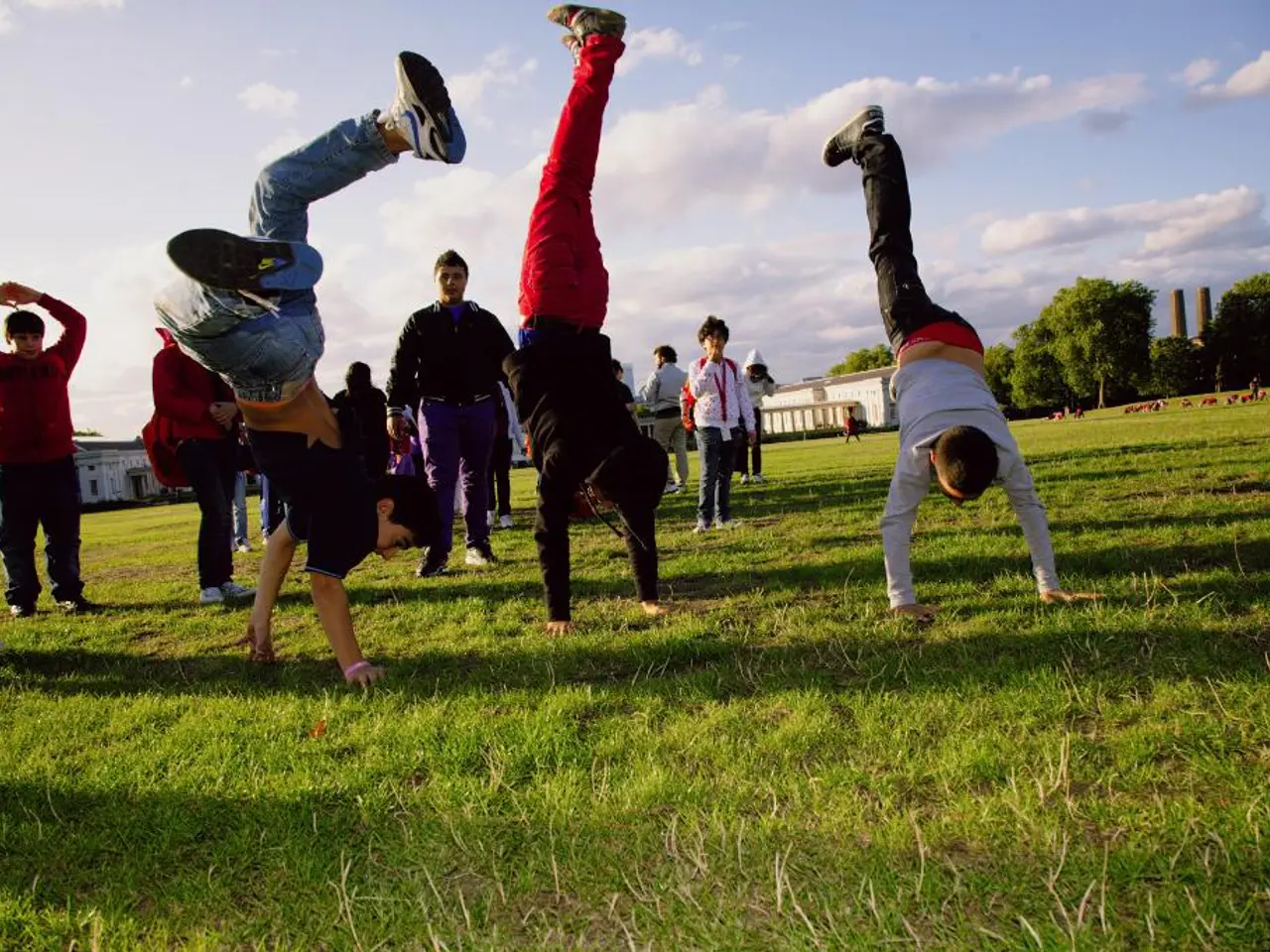Routine Balance Enhancement Exercises Advised for Individuals in Their 50s by a Certified Fitness Instructor
Maintaining balance is crucial for older adults, as it helps reduce the risk of falls and related injuries, enhances mobility, and improves quality of life. Balance training offers numerous benefits, including preserving independence, cognitive benefits, and mental health boosts.
According to a 2022 study in the British Journal of Sports Medicine, poor balance has been linked to increased risks of cardiovascular disease, obesity, and death. In light of this, it's essential to focus on balance exercises that are safe, adaptable, and effective for older adults.
Here are some recommended balance exercises:
- Heel-to-toe walking: Walking in a straight line, placing one foot directly in front of the other, helps lower the center of gravity and forces the stabilizing muscles in the hips and core to work harder. Try doing this for 1 set and 10 steps in each direction.
- Standing from sitting: Practicing standing up from a seated position without using hands is a simple yet effective exercise that strengthens the legs and improves balance. Aim for 3 sets, with 10 repetitions for each set.
- Wobble board or balance board exercises: Using unstable surfaces to challenge balance helps improve stability and coordination. Try these exercises for 3 sets, with 15 repetitions for each set.
- Calf raises: Standing on toes and lowering back down builds ankle strength, which is essential for maintaining balance. Aim for 3 sets, with 15 repetitions for each set.
- Single-leg stands: Standing on one foot at a time improves stability. The Single-leg touchdown, a more advanced balance exercise, requires balancing on one foot, making it a more challenging exercise. You can make it easier by using a chair or wall for support, and touching the thigh or knee instead of the foot if necessary. Try doing this for 3 sets, with 10 repetitions for each side.
- Functional strength moves: Exercises like wall push-ups and shoulder blade squeezes help support balance by strengthening the core and upper body.
- Avoid-impact exercises: Slow, focused movements like Tai Chi and yoga poses promote static and dynamic balance, making them ideal for older adults.
The Centers for Disease Control and Prevention (CDC) recommends performing balance exercises at least three times a week to maintain and improve balance over time, effectively reducing fall risk and injury severity from falls. Combining balance exercises with strength training amplifies these benefits, as stronger muscles help maintain stability and mobility.
In conclusion, improving balance offers significant benefits for older adults, including reduced fall risk, preserved independence, improved mobility, cognitive benefits, mental health boosts, injury prevention, and enhanced quality of life. These exercises are safe and adaptable for most older adults and can be performed at home or under professional guidance to maintain balance and functional ability with aging.
- A reality backed by science, regular 'personal training' that includes 'workouts' focusing on balance exercises can help older adults reduce the risks of falls and related injuries.
- For optimal results, it's prudent to incorporate 'cardio' exercises along with balance training, as stronger muscles from these workouts contribute to maintaining stability and mobility.
- Engaging in fitness-and-exercise routines that encompass balance training, 'health-and-wellness' activities like yoga and Tai Chi, and personal training sessions can lead to a holistic improvement in the quality of life for older adults.




